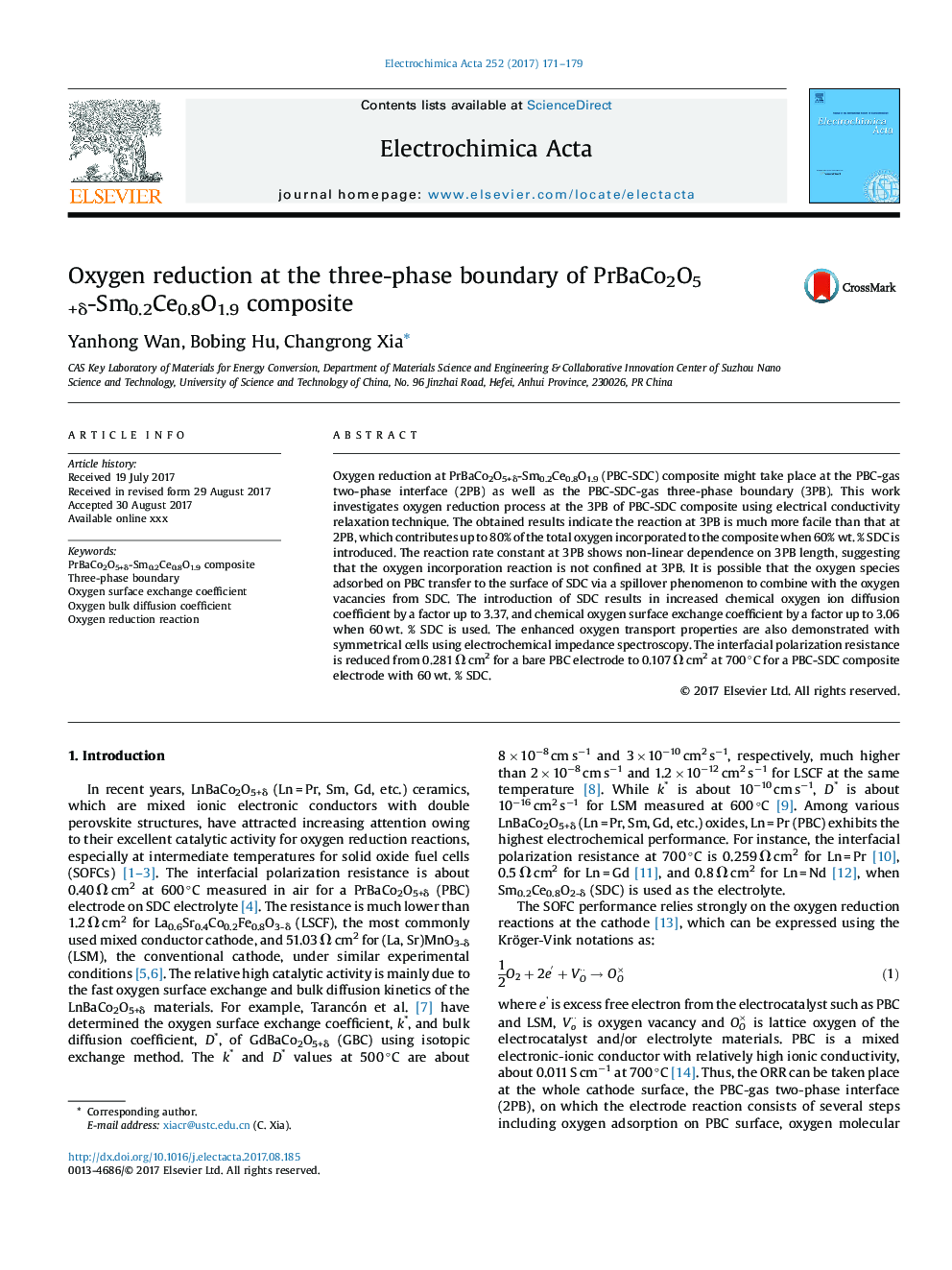| Article ID | Journal | Published Year | Pages | File Type |
|---|---|---|---|---|
| 6470243 | Electrochimica Acta | 2017 | 9 Pages |
Abstract
Oxygen reduction at PrBaCo2O5+δ-Sm0.2Ce0.8O1.9 (PBC-SDC) composite might take place at the PBC-gas two-phase interface (2PB) as well as the PBC-SDC-gas three-phase boundary (3PB). This work investigates oxygen reduction process at the 3PB of PBC-SDC composite using electrical conductivity relaxation technique. The obtained results indicate the reaction at 3PB is much more facile than that at 2PB, which contributes up to 80% of the total oxygen incorporated to the composite when 60% wt. % SDC is introduced. The reaction rate constant at 3PB shows non-linear dependence on 3PB length, suggesting that the oxygen incorporation reaction is not confined at 3PB. It is possible that the oxygen species adsorbed on PBC transfer to the surface of SDC via a spillover phenomenon to combine with the oxygen vacancies from SDC. The introduction of SDC results in increased chemical oxygen ion diffusion coefficient by a factor up to 3.37, and chemical oxygen surface exchange coefficient by a factor up to 3.06 when 60 wt. % SDC is used. The enhanced oxygen transport properties are also demonstrated with symmetrical cells using electrochemical impedance spectroscopy. The interfacial polarization resistance is reduced from 0.281 Ω cm2 for a bare PBC electrode to 0.107 Ω cm2 at 700 °C for a PBC-SDC composite electrode with 60 wt. % SDC.
Related Topics
Physical Sciences and Engineering
Chemical Engineering
Chemical Engineering (General)
Authors
Yanhong Wan, Bobing Hu, Changrong Xia,
